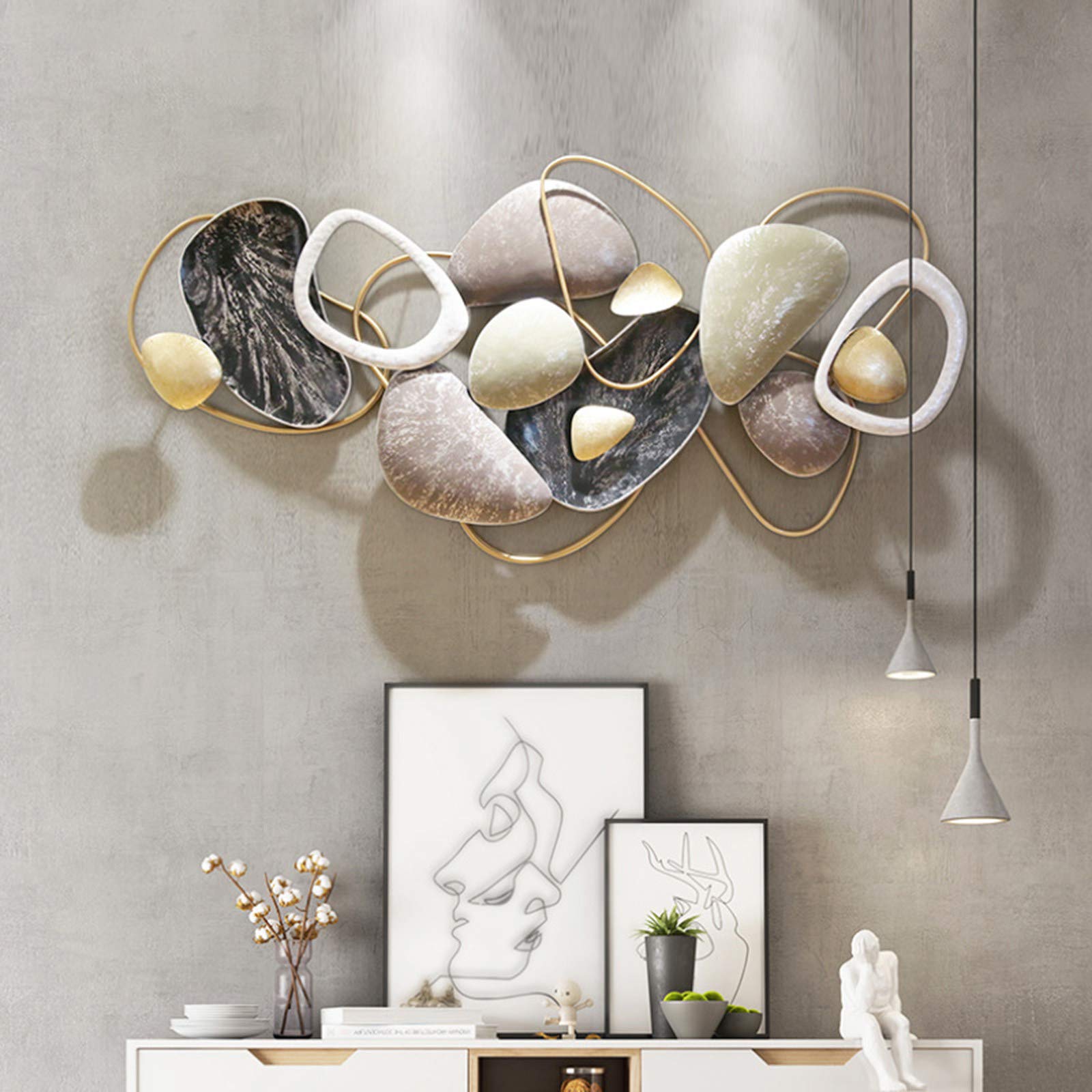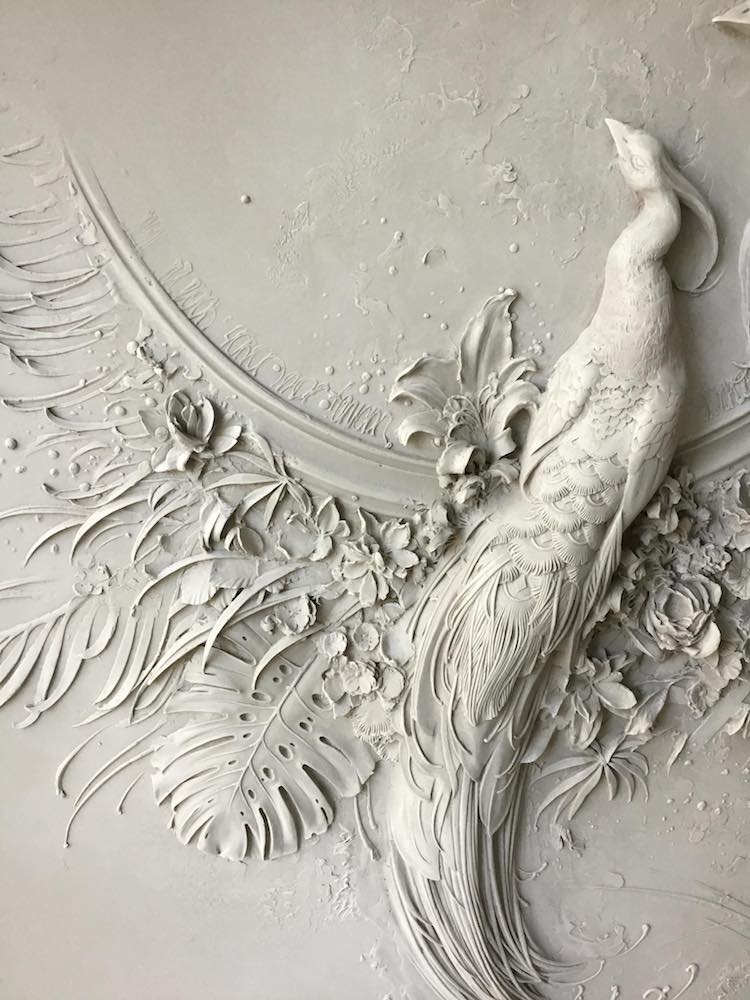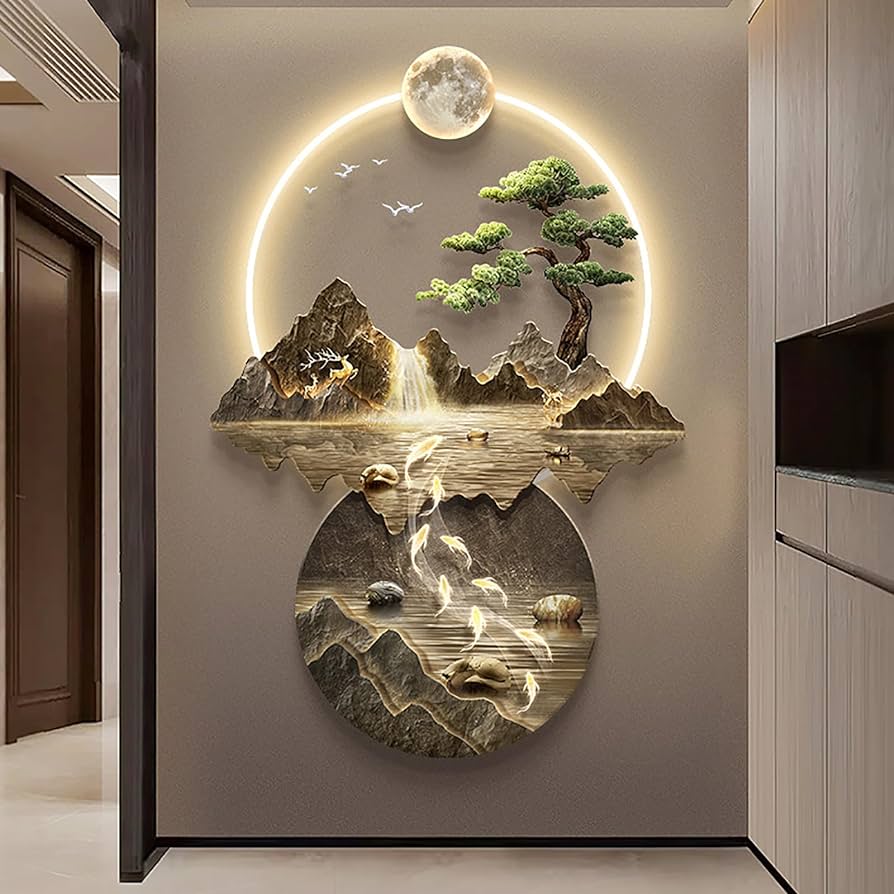Wall sculptures, also known as bas-reliefs, have adorned walls for centuries, adding a touch of elegance, sophistication, and three-dimensional artistry to interior spaces. These sculptural creations, often carved from stone, wood, or metal, protrude from the wall, creating a captivating interplay of light and shadow. Whether depicting intricate patterns, mythological figures, or abstract designs, wall sculptures bring walls to life, transforming them into captivating focal points.

Part 1: Introduction to Wall Sculptures
Definition and History
Wall sculptures, also known as bas-reliefs, are a form of sculpture that protrudes from a flat background, typically a wall. The term “bas-relief” comes from the Italian words “basso” (low) and “rilievo” (relief), referring to the shallow depth of the carving. Wall sculptures have a rich history, dating back to ancient civilizations, where they were used to decorate temples, palaces, and public spaces.
Types of Wall Sculptures
Wall sculptures can be categorized based on their subject matter, style, and technique. Some common types of wall sculptures include:
-
- Narrative reliefs: These sculptures depict stories or events, often from mythology or history.
-
- Decorative reliefs: These sculptures are designed to enhance the beauty of a space, often featuring geometric patterns, floral motifs, or stylized figures.
-
- Portrait reliefs: These sculptures depict individual figures, often in a realistic or idealized manner.
-
- Abstract reliefs: These sculptures do not represent any specific object or figure, but instead explore form, texture, and space.
Materials and Techniques
Wall sculptures can be created from a variety of materials, including stone, wood, metal, plaster, and even ceramic. The most common techniques used in creating wall sculptures include:
-
Carving: This technique involves removing material from a block of stone or wood to create the desired form.
-
Modeling: This technique involves adding and shaping material, such as clay or plaster, to create the desired form.
-
Casting: This technique involves pouring liquid metal or plaster into a mold to create the desired form.
-
Assemblage: This technique involves combining different materials, such as found objects or recycled materials, to create the desired form.

The Appeal of Wall Sculptures
Visual Interest and Dimensionality
Wall sculptures add visual interest and dimension to walls, transforming them from flat surfaces into captivating focal points. The interplay of light and shadow created by the raised relief adds depth and texture to the space.
Artistic Expression and Storytelling
Wall sculptures can be powerful forms of artistic expression, conveying narratives, emotions, and cultural themes. They can depict historical events, mythological stories, or even personal experiences.
Decorative Enhancement and Style
Wall sculptures can enhance the décor of a space, adding a touch of elegance, sophistication, and personality. They can complement a variety of interior styles, from traditional to modern.
Notable Wall Sculptures from History
Ancient Egyptian Bas-Reliefs
Ancient Egyptian bas-reliefs are renowned for their intricate detail and vivid storytelling. These sculptures adorned the walls of temples, tombs, and palaces, depicting scenes from daily life, religious ceremonies, and pharaohs’ victories.
Greek and Roman Wall Sculptures
Greek and Roman wall sculptures celebrated the gods, heroes, and triumphs of their civilizations. These sculptures were often carved from marble and featured idealized figures in dynamic poses.
Medieval and Renaissance Wall Art
Medieval and Renaissance wall art often featured religious themes, depicting saints, angels, and scenes from the Bible. These sculptures were often carved from stone or wood and incorporated intricate details and symbolism.
Modern and Contemporary Wall Sculptures
The Rise of Abstract Art
The 20th century saw the rise of abstract art, which had a profound impact on wall sculptures. Abstract sculptors broke away from representational forms, exploring concepts of space, form, and texture.
Minimalist and Conceptual Wall Art
Minimalist and conceptual wall sculptures emerged in the mid-20th century, emphasizing simplicity, form, and the viewer’s interpretation. These sculptures often used basic shapes, industrial materials, and subtle interactions with the environment.
Contemporary Wall Sculptures
Contemporary wall sculptures encompass a wide range of styles, materials, and techniques. Artists continue to push the boundaries of the
medium, incorporating found objects, recycled materials, and new technologies. From kinetic sculptures that move to interactive installations that engage the viewer, contemporary wall sculptures offer a dynamic and ever-evolving art form.
Selecting and Installing Wall Sculptures
Choosing the Right Wall Sculpture
Selecting the right wall sculpture for your space involves considering several factors. First, think about the overall style of your décor. Does your space lean towards traditional, modern, or something in between? Choose a sculpture that complements your existing furniture, artwork, and color palette.
Next, consider the size of the wall and the amount of space available. A large sculpture can make a bold statement in a spacious living room, while a smaller piece might be more suitable for a bedroom or hallway.
The material of the wall sculpture is also an important consideration. Stone and metal sculptures tend to be more formal, while wood and plaster offer a warmer aesthetic. Think about the mood you want to create in the space and choose a material that complements that feeling.
Finally, don’t forget to consider your budget. Wall sculptures can range in price depending on the artist, material, and size. Set a realistic budget and be prepared to do some research to find a piece that fits both your taste and your wallet.
Proper Installation
Once you’ve chosen your wall sculpture, it’s important to install it properly. For heavier sculptures, it’s crucial to use sturdy wall anchors to ensure the sculpture is securely mounted and won’t fall. Always follow the manufacturer’s instructions for installation and use the appropriate hardware for the type of wall and the weight of the sculpture.
Placement and Lighting
The placement and lighting of your wall sculpture can significantly impact its visual impact. Consider the natural light sources in the room and how they will illuminate the sculpture. You may also want to install additional lighting to highlight certain details or create dramatic shadows.
For optimal viewing, position the sculpture at eye level or slightly above. If you’re hanging the sculpture above furniture, ensure there’s enough space between them to avoid an overcrowded look. Take some time to experiment with different placements before permanently hanging the sculpture.
Caring for Wall Sculptures
Cleaning and Maintenance
The cleaning and maintenance needs of your wall sculpture will depend on the material it’s made from. For stone and metal sculptures, a light dusting with a soft microfiber cloth is usually sufficient. Wooden sculptures may require occasional polishing with a furniture wax specifically designed for the type of wood. Always avoid using harsh chemicals or abrasive cleaners, as they can damage the surface of the sculpture.
Protecting from Damage
To protect your wall sculpture from damage, avoid hanging it in direct sunlight, as this can cause fading or cracking over time. Additionally, keep the sculpture away from sources of heat and humidity, as these can also cause deterioration. If you have pets, take steps to prevent them from jumping on or scratching the sculpture.
Restoration and Conservation
For valuable or antique wall sculptures, consider consulting a professional art conservator for regular cleaning and maintenance. They can assess the condition of the sculpture and then recommend the best course of action for preserving its value and beauty.
Wall Sculptures in Various Interior Spaces
Living Rooms
Wall sculptures can be a stunning focal point in a living room. A large, abstract sculpture can add a touch of modern sophistication, while a more traditional relief sculpture can create a sense of history and elegance.
Bedrooms
Wall sculptures can add a touch of serenity and visual interest to a bedroom. Then choose a sculpture with calming colors and textures to promote a peaceful atmosphere.
Entryways and Foyers
A well-chosen wall sculpture can make a grand first impression in an entryway or foyer. Opt for a sculpture that reflects your personal style and sets the tone for the rest of your home.
Public Spaces
Wall sculptures are not just for private residences. They can also be found in public spaces such as museums, galleries, and then corporate offices. These sculptures can enhance the aesthetic appeal of the space, create a sense of history or culture, or even spark conversation among visitors.
Famous Wall Sculptors and Their Works
Auguste Rodin (1840-1917)
A pioneer of modern sculpture, Auguste Rodin is renowned for his expressive and dynamic wall sculptures. Works like “The Thinker” and “The Kiss” are iconic examples of his ability to capture human emotion through form and movement.
Louise Bourgeois (1911-2010)
Louise Bourgeois explored themes of femininity, sexuality, and trauma in her thought-provoking wall sculptures. Her spider sculptures, such as “Maman,” have become powerful symbols of protection and vulnerability.

